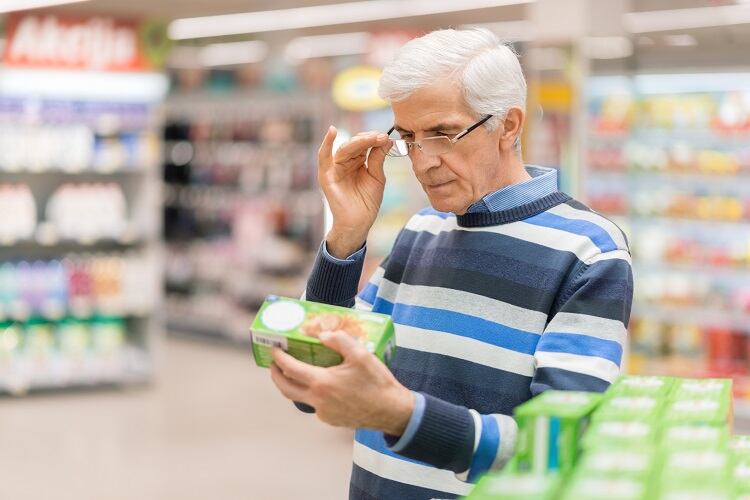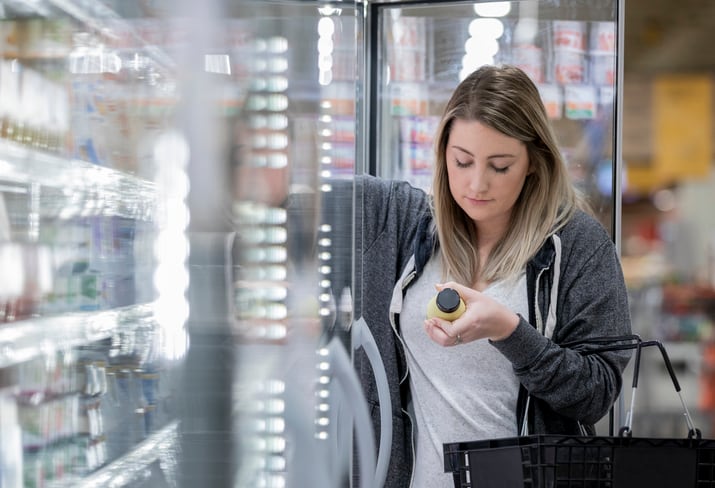Agri-food production is a significant contributor to global warming, accounting for around one-third of anthropogenic greenhouse gas (GHG) emissions.
As awareness of the food industry’s contribution to global warming increases, so too does consumer interest in the sustainability of their shopping baskets. Indeed, recent research suggests that in Europe, consumers are ‘highly motivated’ to buy sustainable food to reduce their climate impact.
According to a survey conducted by IPSOS on behalf of plant food major Yara, 58% of Europeans consider the climate impact important when buying food and beverages. And 31% of Europeans already make sustainable choices when it comes to their buying habits.
But what are consumers looking for when seeking out food and drink with environmentally sustainable credentials? How can brands make their sustainability claims more tangible for consumers?
And if these products come with a higher price tag, does that negatively impact purchase decisions? FoodNavigator investigates.
How can ‘green’ food and drink stand out on-shelf?
Consumers pick out ‘green’ food and drink in different ways. For some, environmental sustainability is flagged by eco-friendly packaging, for others, it’s about plant-based or locally sourced ingredients.
But according to industry, some ‘green’ trends are standing out more than most.
“We continue to see a lot of interest in sustainable and regenerative agriculture, but we are seeing a rise in interest in carbon emission reductions, as well as sustainability label claims,” explained Brian Nash, vice president, corporate sustainability at global ingredients supplier Ingredion.
“All of this is rolling up into an increased focus on formulating for sustainability, with a growing number of customers asking us how changes in formulations can contribute to their brand sustainability goals.”

One trend gaining increased traction is carbon footprint labelling. According to Yara’s research, more than three out of four (76%) of Europeans want to see the carbon footprint of items on the label. And close to three out of four (74%) believe food companies should work to reduce emissions in their food production.
“In Europe, reduced carbon footprint is the pledge consumers showed most interest in regarding foo, drink, and supplement products,” Emily Rosenberg, global insights communication manager at Ingredion told FoodNavigator.
This is backed up by FMCG Gurus 2022 research, which suggests 69% of European consumers look for ‘reduced carbon footprint/no carbon footprint’ claims when purchasing food and drink products.
“Additionally, consumers have changed their diets and lifestyle habits to reduce their carbon footprint,” said Rosenberg. “Seventy-two percent of consumers find climate change/rising temperatures a key danger they associate with carbon emissions.”
Making purchase decisions based on sustainability claims
Other factors are also influencing ‘green’ purchasing decisions, according to the ingredients major.
Ingredion’s 2023 global consumer trends ATLAS study suggests that two-thirds of European consumers consistently make food and beverage decisions based on sustainability claims. And while 65% of European consumers are buying the same amount of food and beverages with sustainability or environmental claims, 28% of European consumers say they are buying more.
As to what claims European consumers find ‘somewhat’ or ‘extremely important’ when purchasing food and beverage products, 65% said ‘sustainably sourced ingredient’, 66% said ‘ingredients traceable to the source’, and 68% said ‘made with locally sourced ingredients’.

Ensuring that sustainability claims are tangible for consumer is key, agreed Anne Peter Lindeboom, managing director, innovation, at FrieslandCampina Ingredients.
“The pressure is on for nutrition brands to show what they’re doing to be more sustainable,” he told FoodNavigator. “Adding sustainability messaging on-pack is a simple way of educating consumers about your product’s impact at a key touchpoint.
“However, it’s imperative that these claims are meaningful and easily understood.”
This point is backed up by 2022 research by Deloitte suggesting that almost half (48%) of consumers say they don’t have enough information to make sustainable decisions.
For FrieslandCampina Ingredients, the ticket to getting this right is data. “Steering clear or terms like ‘greener’ or ‘environmentally friendly’, and opting for statistics and measurable insights can show your brand is protecting the planet.
“Better still, brands can showcase their progress towards existing industry standards and goals. And to take it even further, companies can have these stats audited and certified,” Lindeboom told this publication.
Indeed, according to 2020 data from Compare Ethics, 83% of people say they’re more likely to trust a product’s sustainability claims if it’s been substantiated by an independent third party.
But are consumers willing to pay for sustainability?
Improving the sustainability profile of food and drink production can be expensive. When costs are not completely absorbed by the manufacturer, and are – at least in part – passed on to the consumer, it’s important to be assured shoppers will pay.
Amid a cost-of-living crisis, this question is even more relevant. Food inflation in the European Union recently reached an all-time-high of 19.17%.
Yara’s findings suggest consumers are mostly willing to pay more for ‘greener’ food and drink. Sixty-nine percent of Europeans said they would choose a climate friendlier food item versus a cheaper option (made up of 26% who would choose a fossil-free food item, and 43% who would choose a low-carbon product).
Ingredion, too, believes a growing number of consumers are willing to pay a premium for sustainably produced food.
“We are seeing a rise in conscientious consumers who are looking to buy from trustworthy, sustainable brands,” Ingredion’s Nash told FoodNavigator. “We are seeing a range of sustainability interests, depending on the market segment.”
In the dairy category for example, consumers increasingly turning to plant-based alternatives, which Nash explained can be driven by a desire to eat healthier but is also fuelled by a desire to lower the carbon footprint of their diet.
“Understanding where consumers are willing to pay more can really help companies leverage sustainability to enhance brand value.”
The growing link between what is healthy and what is sustainable
“There is high concern for the environment among consumers and sustainable nutrition has a key role to play here,” added Nathalie Sadin, sustainability manager at Germany-headquartered Beneo.
A survey conducted on behalf of the ingredient supplier showed that around three in four consumers globally consider it important how food is made and what is in it, while being equally concerned about climate change and the environment. These concerns are ranked even higher by consumers globally that identify as flexitarians, with figures showing four in five of this cohort are concerned about climate change, the environment and animal welfare. “It’s also interesting to note that 42% of global consumers think that a product is not healthy if it’s not also sustainable,” Sadin said.
A recent study from Mintel has also indicated that consumers rank health benefits and natural ingredients higher than 'lower in price' when asking them to define 'value' in food and beverages. In addition, a report from Innova demonstrates that local and environmentally friendly products are worth paying for, with 30% of consumers saying they are willing to pay a premium for environmentally friendly products. “These insights really demonstrate the importance consumers are now placing on the sustainability of the products that they buy,” said Sadin.




